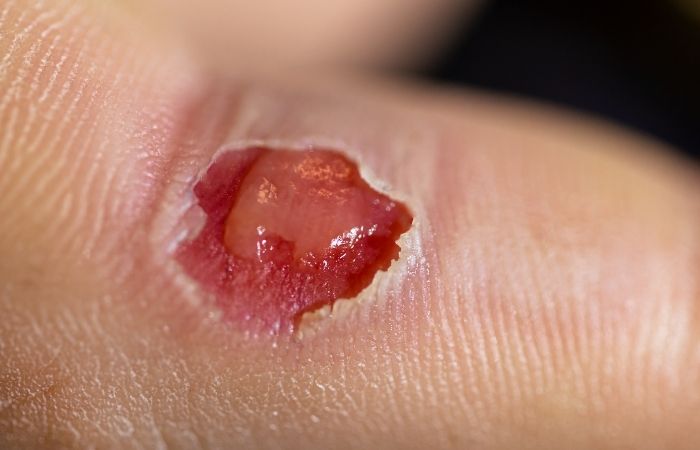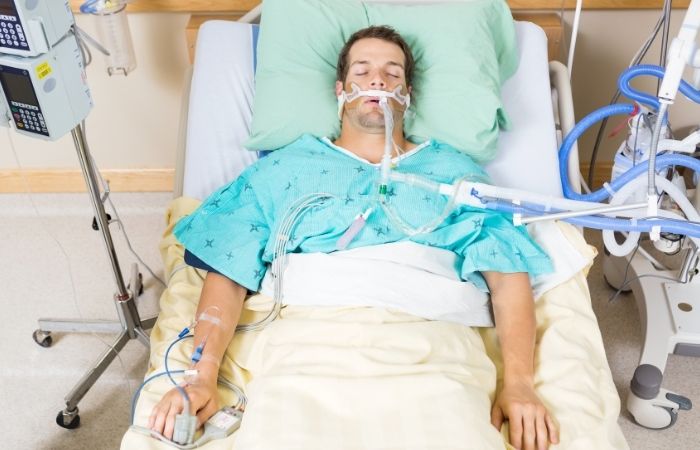Protected Sex, Still Got an STD, How Is That Possible
Quick Answer: Donovanosis is a rare but dangerous sexually transmitted infection that causes open, flesh-like ulcers. It often gets misdiagnosed as herpes or syphilis, especially in underserved communities. Early testing and treatment prevent permanent tissue damage.
Why You’ve Never Heard of Donovanosis (And Why That’s a Problem)
Donovanosis, also called granuloma inguinale, isn’t new. It was first described in the early 1900s and still appears in pockets of the world, including parts of India, Papua New Guinea, South Africa, and Northern Australia. But in 2025, new cases are also showing up in U.S. clinics, just not the ones that get funding, testing kits, or social media attention.
The infection is spread primarily through sexual contact and causes progressive ulcerative lesions, often on the genitals, thighs, or groin. But unlike more well-known STDs, it doesn’t always hurt. That makes it easy to ignore. By the time someone seeks care, the infection may have eaten into muscle, skin, and surrounding tissue. These ulcers don’t heal without antibiotics. In fact, if untreated, they continue to expand.
Donovanosis is not just a medical issue, it’s a signal of whose bodies get ignored. Most U.S. doctors haven’t seen a single case in their careers. And that blind spot delays care. It hits migrants, homeless communities, sex workers, and people in underfunded rural areas first, people who often can’t afford a misdiagnosis.

People are also reading: Trichomoniasis vs Prostatitis: What’s Really Causing Your Symptoms?
This Isn’t Herpes. This Isn’t Syphilis. But It Gets Labeled as Both.
What does donovanosis look like? Search queries like “STD with flesh-eating sores” and “ulcer STD no pain” spike when people see lesions that don’t fit the herpes script. One 2023 case study out of Florida described a patient treated three separate times for herpes and syphilis before donovanosis was identified in a punch biopsy. By then, the ulcers had spread into the patient’s pubic region and inner thighs.
Clinically, it gets misread because it looks like other things, at first. Early donovanosis starts as small, red bumps that slowly enlarge into beefy-red ulcers. The key difference? They don't scab, they don’t usually hurt, and they bleed easily when touched. Unlike syphilis, which usually resolves even without treatment (but comes back in stages), donovanosis only gets worse without medical care.
Doctors trained in Western countries rarely test for it because they’re not taught to. Even STI panels and NAAT tests don't catch it. Diagnosis requires a special stain or biopsy to find what’s called a "Donovan body" under the microscope. If your provider doesn’t even think of it, you’re stuck in a cycle of wrong answers.
And when that happens, the infection spreads, to others, and deeper into your own body.
“They Said It Was Syphilis. It Wasn’t.”
Tyrese, 31, first noticed a sore on the shaft of his penis after a week-long road trip. He’d hooked up once, used a condom. It bled slightly during sex, which scared him. At the walk-in clinic, they ran a rapid test and told him it was probably syphilis, even though the test was negative.
“They gave me a shot and sent me home. But two weeks later it was worse. Bigger. Redder. I couldn’t even wear jeans.”
When he came back, a different doctor finally ordered a biopsy. The result? Donovanosis. He’d never heard of it. They gave him a full course of azithromycin, and the lesion slowly healed. But he still has a scar. And a deep distrust of medical guesses.
“If I hadn’t gone back,” he says, “I’d still be bleeding.”
How Donovanosis Spreads, and Why It Targets the Margins
Unlike chlamydia or gonorrhea, donovanosis isn’t caused by a typical bacteria. It’s the result of a gram-negative intracellular organism called Klebsiella granulomatis. It spreads through skin-to-skin contact during vaginal, anal, or oral sex, but it doesn’t always need penetration to transmit. Genital rubbing and shared sex toys are enough. Even a single exposure can lead to infection.
The people most likely to get it aren’t doing anything "riskier." They're just living at the edges of care. Studies show donovanosis thrives in regions with:
Table 1. Structural and social factors that increase risk of overlooked STDs like donovanosis.
In other words, it’s not your behavior. It’s your access to care. And when that access is delayed, this infection gets brutal fast.
What Testing Looks Like (And Why It’s Rarely Done)
Here’s the hard truth: There is no standard rapid test for donovanosis. It’s not part of any routine STD panel. That means if your provider doesn’t think of it, they won’t test for it. And since most U.S. doctors have never seen a case, it slips through the cracks.
Diagnosis requires a special stain (Giemsa or Wright stain) or a tissue biopsy of the ulcer, sent to a lab for microscopy. They’re looking for the classic “Donovan bodies”, rod-shaped bacteria living inside immune cells. But unless a patient pushes back, this test usually isn’t offered. And the longer the ulcer lasts, the more invasive the sample needs to be.
So what can you do? Rule out other STDs first. If your at-home STD test for herpes, syphilis, chlamydia, and gonorrhea comes back negative, but symptoms persist, you need to escalate care. Ask directly about donovanosis. Show photos. Ask for a referral. Don’t wait for someone else to mention it.
How Donovanosis Is Treated (And Why Early Action Matters)
The good news: Donovanosis is treatable with antibiotics. The bad news? Most people don’t get them soon enough. The CDC’s 2021 STI guidelines recommend the following for uncomplicated cases:
Table 2. CDC-recommended antibiotics for treatment of donovanosis (adapted from current STI guidelines).
Treatment must continue until lesions are completely healed, not just until they shrink. Otherwise, they can flare back up. In advanced cases, especially when ulcers have penetrated deeply or created disfiguring scar tissue, surgery may be needed to repair the damage. This isn’t just a cosmetic issue. It can impact urination, sexual function, and mobility.
If you’re being treated, your partner(s) should be too, even if they don’t have symptoms yet. That’s how you stop the cycle.
Who Gets Donovanosis? The Demographic We Don’t Like to Talk About
Data is limited because testing is rare, and donovanosis isn’t nationally notifiable in many countries. But from the cases we do have, a pattern emerges: Donovanosis thrives in silence. It affects people who are already underserved. This includes:
- Migrant laborers without insurance
- LGBTQ+ individuals with limited access to affirming care
- Indigenous populations and rural communities with no local clinics
- People experiencing homelessness
- Sex workers operating outside clinical safety nets
This is why donovanosis isn't just a medical story. It's a structural one. Where funding goes, diagnosis follows. Where shame and poverty intersect, infections go undetected until they’ve done real harm. In this way, donovanosis becomes a mirror, showing us who gets care and who gets forgotten.
And when you’re forgotten, even a treatable STD can destroy your quality of life.
Why “Just Wait and See” Can Be Dangerous
Donovanosis doesn’t always hurt. That’s part of the danger. Without the pain cues that force people to act, these ulcers can quietly expand over weeks or months. They can also become secondarily infected with other bacteria. In rare cases, chronic donovanosis has been linked to squamous cell carcinoma, a form of skin cancer documented in neglected cases.
Some readers ask: Can donovanosis go away on its own? The answer is no. Unlike some viral STDs that might resolve symptoms but remain in the body, donovanosis keeps eating tissue until treated. It is 100% curable, but only if it’s caught. And that’s the problem when a disease hides behind silence, shame, and a medical system that assumes it’s not “relevant.”
Return to STD Test Kits to explore discreet at-home test kits that rule out the most common infections. If you’re still left with symptoms and no answers, use that information as leverage to push for deeper testing.

People are also reading: When Endometriosis Symptoms Might Actually Be Chlamydia or PID
Why This STD Still Spreads in 2025
It’s 2025, and we have vaccines for COVID, mpox, HPV, and hepatitis B. We have PrEP for HIV. We have home tests that give results in minutes. And yet, people are still walking around with untreated, bleeding genital ulcers because nobody told them donovanosis exists.
One of the cruelest parts? It spreads before it’s recognized. In its earliest stage, donovanosis looks like a zit, or a pimple, or maybe a bug bite. People continue having sex, thinking it’s nothing. By the time the sore enlarges or bleeds, weeks may have passed, and multiple partners exposed.
What makes it worse is that public health systems rarely include donovanosis in educational materials. It doesn’t show up in most sexual health curriculums. And it doesn’t get influencers making TikToks about it. Which means you don’t know what to ask about, until it’s too late.
But you’re reading this now. And that matters. Because now you know what to watch for. And if your doctor doesn’t? Show them.
What You Can Do, Even If You Don’t Have a Doctor
If you're reading this from a motel room, a friend’s couch, or somewhere you don’t want anyone to know your location, you're not alone. And you still have options.
Here’s the most accessible first move: rule out the common STDs first. You can do this privately, with no ID, no insurance, and no awkward clinic wait. A Combo STD Home Test Kit can screen for herpes, syphilis, chlamydia, and gonorrhea right now. If they’re all negative but your symptoms don’t add up, you can walk into your next appointment armed with facts.
“These tests were negative. I still have an ulcer. Can you rule out donovanosis?” That question alone can change your path. It shows you’re paying attention. It forces someone to think beyond the usual checklist. And sometimes, that’s what gets you to real care.
Even if you can’t get a biopsy, you might be able to access the same antibiotics used to treat donovanosis. Some providers will treat presumptively based on travel history or symptom progression. And that can mean the difference between healing and long-term damage.
Sex-Positive Doesn’t Mean STI-Naïve, Why Awareness Is Empowerment
Here’s the deal: you can be sex-positive and still demand accurate, shame-free care. Having an STD doesn’t make you dirty. It doesn’t mean you were reckless. And it definitely doesn’t mean you deserve to suffer.
What it does mean is that your body, your symptoms, and your story deserve to be taken seriously. Donovanosis isn't your fault. It’s a failure of systems that treat some people as worthy of care and others as statistics.
So keep asking questions. Keep pushing back. And most importantly, don’t stop seeking answers just because the first few were wrong.
FAQs
1. What even is donovanosis? I've never heard of it.
You’re not alone, most people haven’t. Donovanosis is a rare bacterial STD that causes fleshy, slowly growing ulcers on the genitals or groin. It’s not a “new” disease, but it’s been so neglected in Western medicine that even some doctors forget it exists. It doesn’t show up on routine STD tests and doesn’t always hurt, which makes it easy to miss until it’s severe.
2. How do you get donovanosis?
Primarily through skin-to-skin sexual contact, vaginal, anal, oral, or even intense grinding. It’s not about body fluids, it’s about contact. The bacteria lives in the skin tissue, and it only takes one exposure. That said, it’s not the kind of infection that spreads through toilets, towels, or casual contact. This is an STI, not a hygiene thing.
3. What does donovanosis look like when it starts?
Early on, it might look like a small red bump, a mosquito bite, or even a little zit in your groin area. No big deal, right? But unlike razor burn or a pimple, it doesn’t go away. Instead, it grows, slowly but steadily, into a beefy-red ulcer that can bleed easily. It’s usually painless, which is why so many people ignore it until it’s unmistakable.
4. Can I get tested for donovanosis at home?
Not directly, there’s no rapid test or mail-in option (yet). But you can test at home for herpes, syphilis, and other STDs that cause similar symptoms. If all of those come back negative and you still have a weird, growing sore, that’s your clue to raise the red flag and ask a doctor specifically about donovanosis. Trust your gut, your body knows when something’s off.
5. Is it curable?
Yes, 100%. The standard treatment is a long course of antibiotics, usually azithromycin or doxycycline, taken daily for at least three weeks. The key is starting early. Once treated, it won’t come back on its own unless you get re-exposed. But if left untreated, it can lead to permanent scarring or worse.
6. Why is it so hard to diagnose?
Because it’s rare in places with good healthcare access, and most doctors just aren’t trained to recognize it. It’s not part of standard STI panels. It doesn’t show up on a swab or urine test. Diagnosis requires either a tissue sample from the sore or a special stain test to find what’s called a “Donovan body” under the microscope. And that only happens if someone even thinks to look for it.
7. Can donovanosis get worse if I wait?
Yes, and it usually does. Unlike herpes or syphilis, which can self-resolve or go dormant, donovanosis just keeps growing. It slowly eats away at skin and soft tissue, which is why it's sometimes called a "flesh-eating" STD. The longer you wait, the more damage it can do, and the longer it takes to heal, even with antibiotics.
8. What if I can’t afford a clinic or don’t have insurance?
That’s real, and it’s why many people use at-home STD kits to rule out everything else first. A combo test can check for herpes, syphilis, gonorrhea, and chlamydia without stepping foot in a clinic. If those are negative and the sore is getting worse, use that info to get a referral or visit a low-cost sexual health center. There are often county or nonprofit clinics that can help, even if you’re undocumented, uninsured, or in a rural area.
9. Is donovanosis only in other countries?
Nope. It’s been reported recently in the U.S., UK, and Australia, especially in marginalized or under-resourced areas. It’s classified as a "neglected tropical disease" because it thrives in places where healthcare access is broken. But just because it’s rare doesn’t mean it’s gone. And being rare doesn’t make you rare for getting it, it just makes it harder to get answers.
10. Can I have sex if I’m being treated?
Ideally, no, not until your sores are fully healed. Donovanosis is contagious through contact, even during treatment. Also, make sure your partner(s) get treated too. You don’t want to play bacterial ping-pong. And if you're not sure how to bring it up? We’ve got resources for that too, because STDs are a reality, not a relationship-ender.
You Deserve Answers, Not Assumptions
If something’s bleeding, growing, or just not healing, it’s not too much to ask for clarity. Donovanosis may be rare, but the experience of being ignored, misdiagnosed, or dismissed? That’s not rare at all. Especially if you’re poor, queer, undocumented, or living far from a major city.
We don’t write about infections like this to scare you. We write because too many people don’t even know this STD exists, until it’s caused months of damage. Now that you know the name, you’re already ahead of where most providers start. You can ask the right questions. You can get tested for everything else. You can push for better care.
Don’t wait and wonder, get the clarity you deserve.
How We Sourced This Article: We combined current guidance from leading medical organizations with peer-reviewed research and real-world case reports to make this guide accurate, relevant, and compassionate. In total, over fifteen reputable sources shaped the writing. Below, we highlight six that are especially relevant to symptoms, treatment, and diagnosis of donovanosis.
Sources
1. CDC – 2021 STD Treatment Guidelines: Donovanosis
2. WHO – Sexually Transmitted Infections Fact Sheet
3. Granuloma Inguinale (Donovanosis) – CDC Treatment Guidelines
4. Granuloma Inguinale – StatPearls
5. Donovanosis (Granuloma Inguinale) – MedlinePlus
6. Granuloma Inguinale – DermNet NZ
About the Author
Dr. F. David, MD is a board-certified infectious disease specialist focused on STI prevention, diagnosis, and treatment. He blends clinical precision with a no-nonsense, sex-positive approach and is committed to expanding access for readers in both urban and off-grid settings.
Reviewed by: Renée Q. Mason, MSN, APRN | Last medically reviewed: September 2025
This article is for informational purposes and does not replace medical advice.







